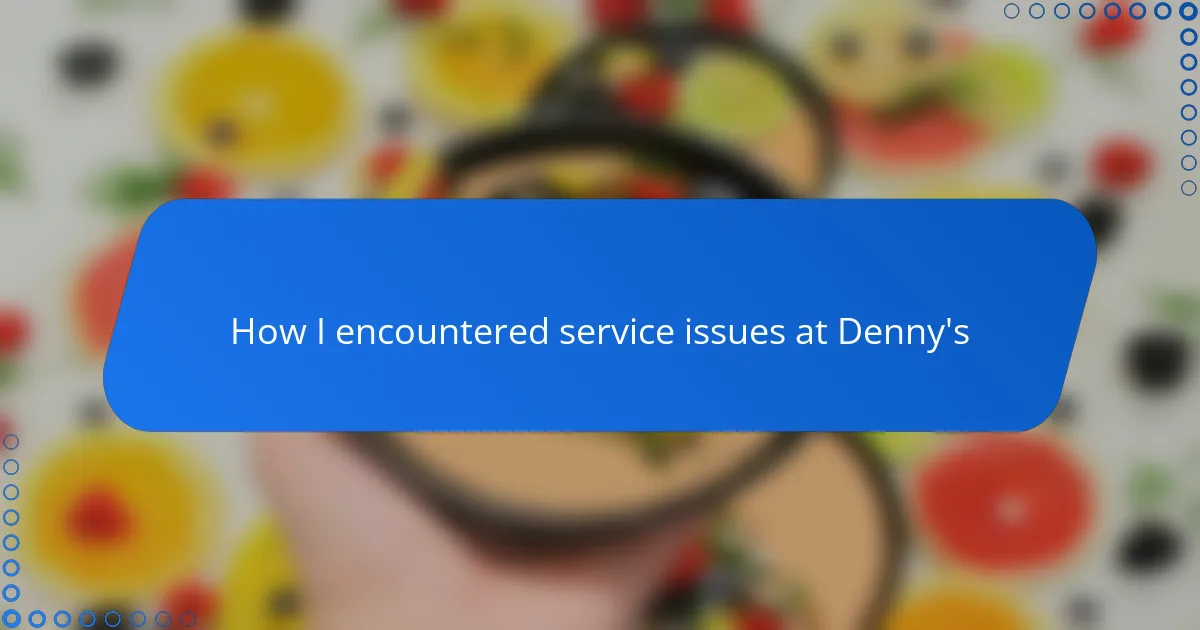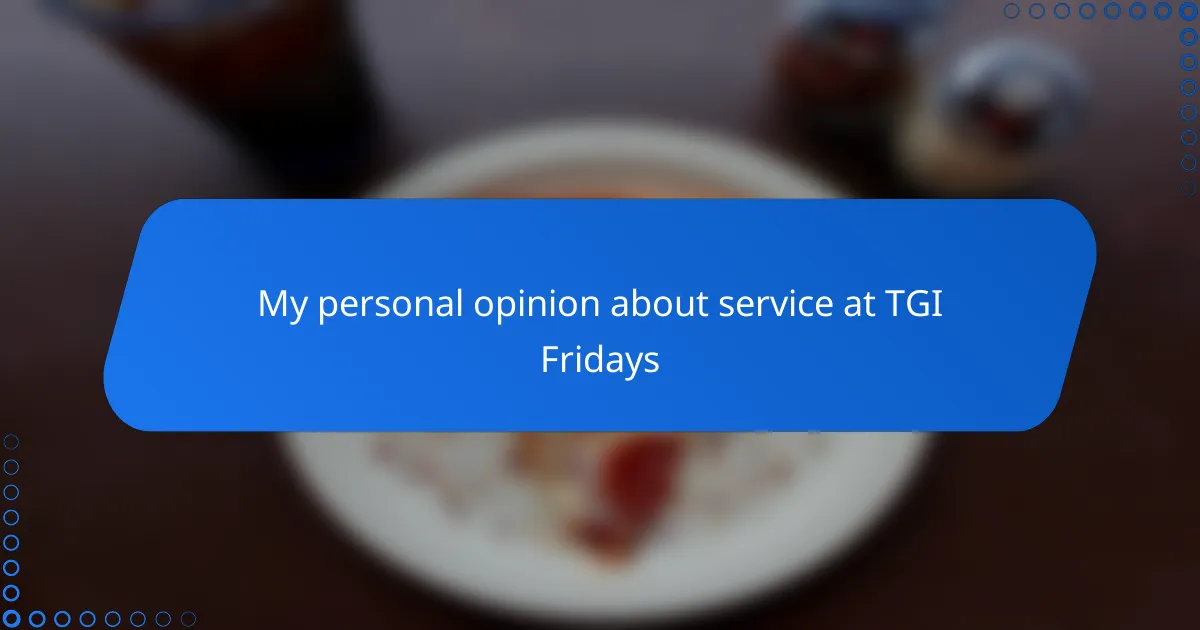Key takeaways
- Service speed is crucial in the fast-food industry, directly impacting customer satisfaction and return visits.
- Fast service at McDonald’s varies by location and time, with peak hours often leading to longer wait times.
- Factors affecting service speed include restaurant layout, staffing levels, and employee training.
- Suggestions for improvement include streamlining the menu, enhancing employee training, and incorporating technology for quicker service.
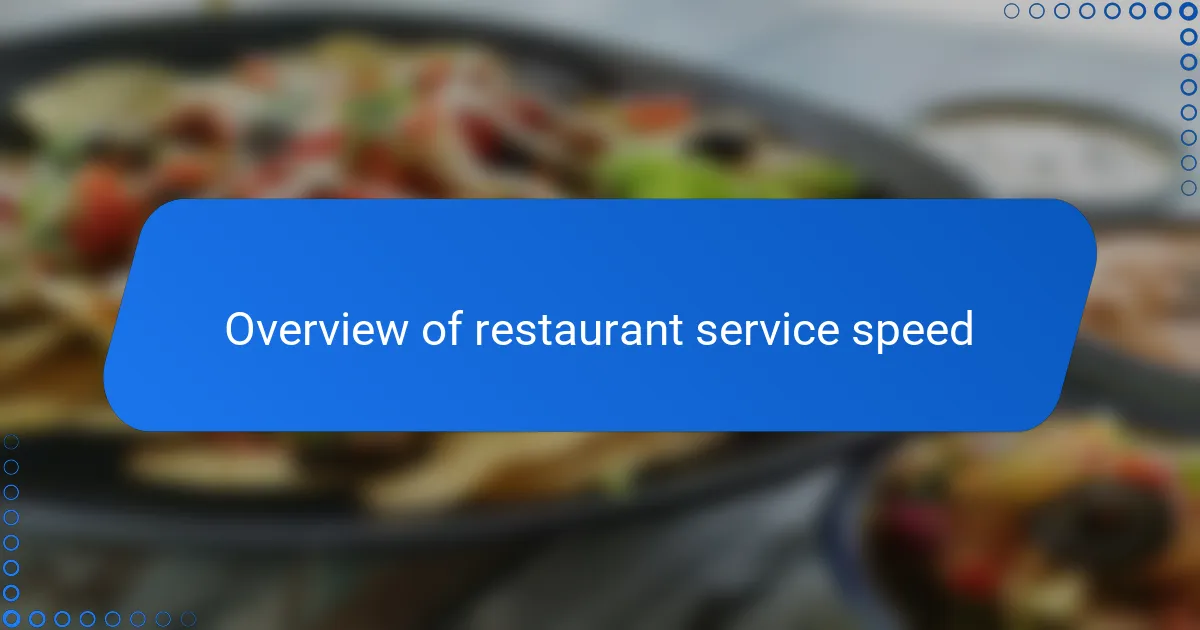
Overview of restaurant service speed
When it comes to service speed at restaurants, it’s truly a game changer. I’ve had days when I’m in a rush and just need a quick meal; it’s those moments when fast service feels like a lifesaver. I often wonder how some places manage to deliver my order in mere minutes while others leave me tapping my foot impatiently.
Reflecting on my experiences at various eateries, it’s clear that efficient service isn’t just about speed but also accuracy. I remember one time at McDonald’s when I received my order almost before I settled into a booth. The thrill of that instant gratification left a lasting impression on me, demonstrating how vital it is for fast-food chains to get it right.
Even more intriguing is how service speed can vary by location and time of day. Have you noticed how a busy lunchtime rush can sometimes transform a restaurant into a chaotic ballet of staff hustle? It’s fascinating to observe, and yet it reinforces why choosing the right time to visit can enhance your dining experience significantly.
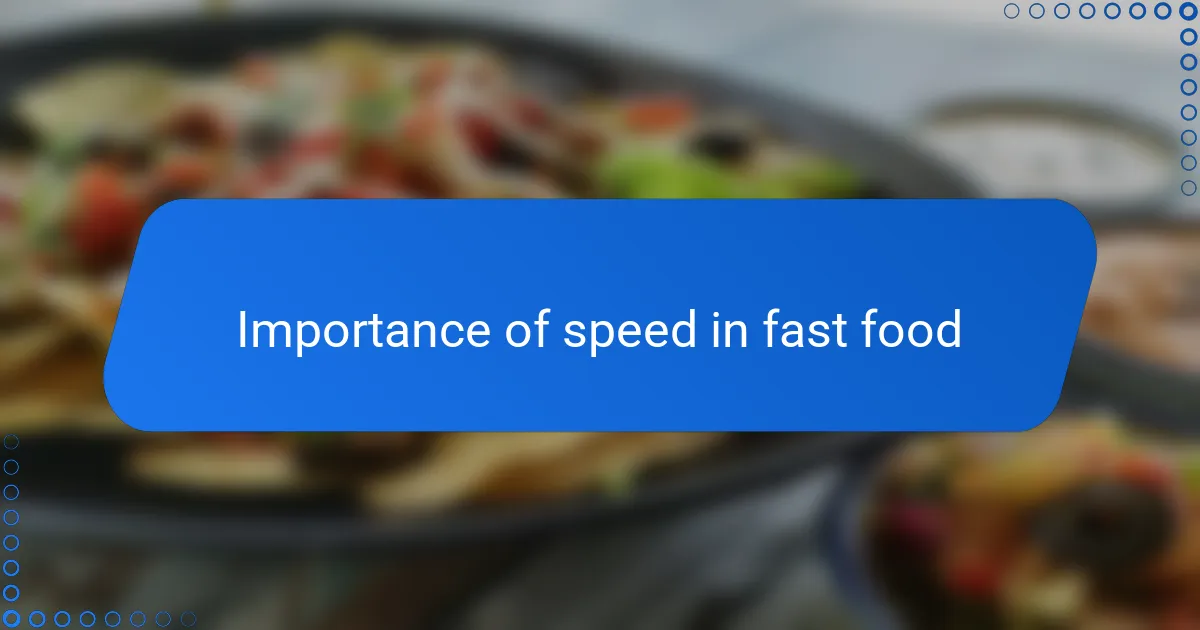
Importance of speed in fast food
When it comes to fast food, speed is everything. I remember waiting in long lines at various restaurants, feeling my stomach growl as time passed by. At McDonald’s, a quick turnaround is often what makes or breaks my meal experience. It’s not just about getting food; it’s about satisfying that craving as quickly as possible.
Fast food is designed for convenience, and customers expect to be in and out in no time. A study shows that efficient service can significantly enhance customer satisfaction, and I can personally attest to this—when the service is quick, I often find myself more willing to return. There’s a certain joy in receiving your order promptly; it feels like every second matters, especially during a busy day.
Here’s a comparison of service speed between McDonald’s and some other popular fast-food chains that reflect this important aspect:
| Restaurant | Average Service Time (Minutes) |
|---|---|
| McDonald’s | 3-5 |
| Burger King | 4-6 |
| Wendy’s | 5-7 |
| Chick-fil-A | 4-8 |
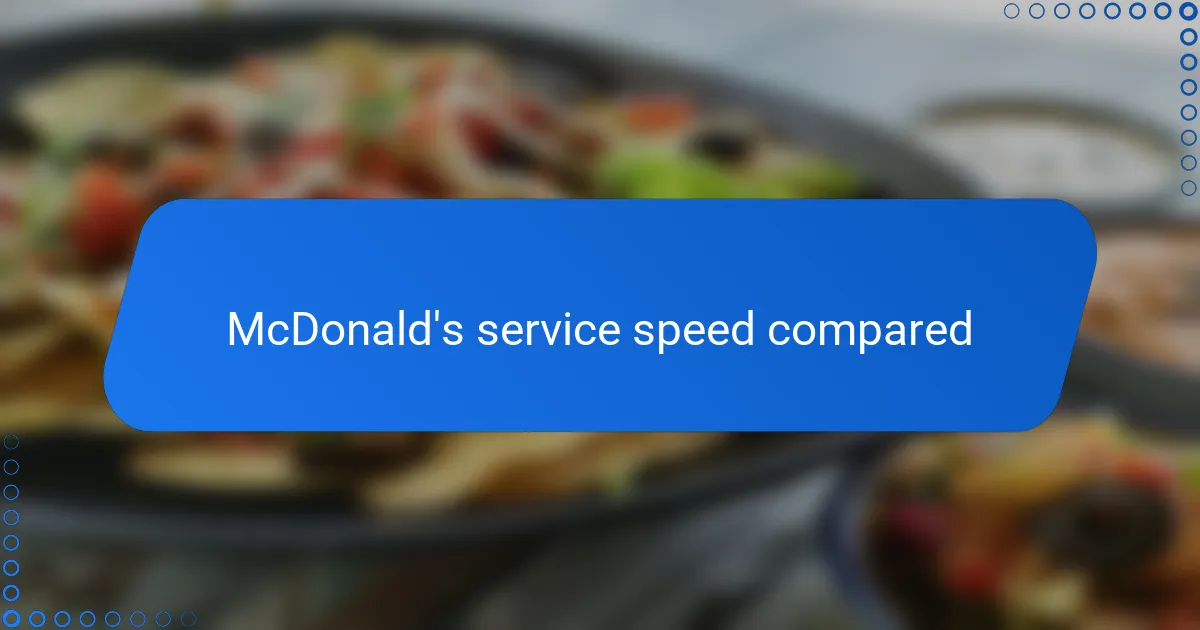
McDonald’s service speed compared
When it comes to service speed at McDonald’s, I’ve experienced quite a range. On busy weekend mornings, I’ve found the drive-thru can get surprisingly sluggish, often taking longer than expected. However, during late-night visits, the efficiency tends to improve dramatically, with staff moving quickly to serve customers.
In my experience, McDonald’s varying service speed often depends on the time of day and staff on duty. For instance, the location near my house is lightning-fast during lunch hours, while another one downtown can feel like a waiting game during dinner rush. It’s fascinating how the dynamics can shift based on these factors.
Here’s a quick comparison of service speeds I’ve noticed across different McDonald’s locations and times:
| Location | Time of Day | Average Wait Time |
|---|---|---|
| Local Drive-Thru | Weekend Morning | 15-20 mins |
| Downtown Store | Weekday Lunch | 5-10 mins |
| Suburban Restaurant | Late Night | 3-5 mins |
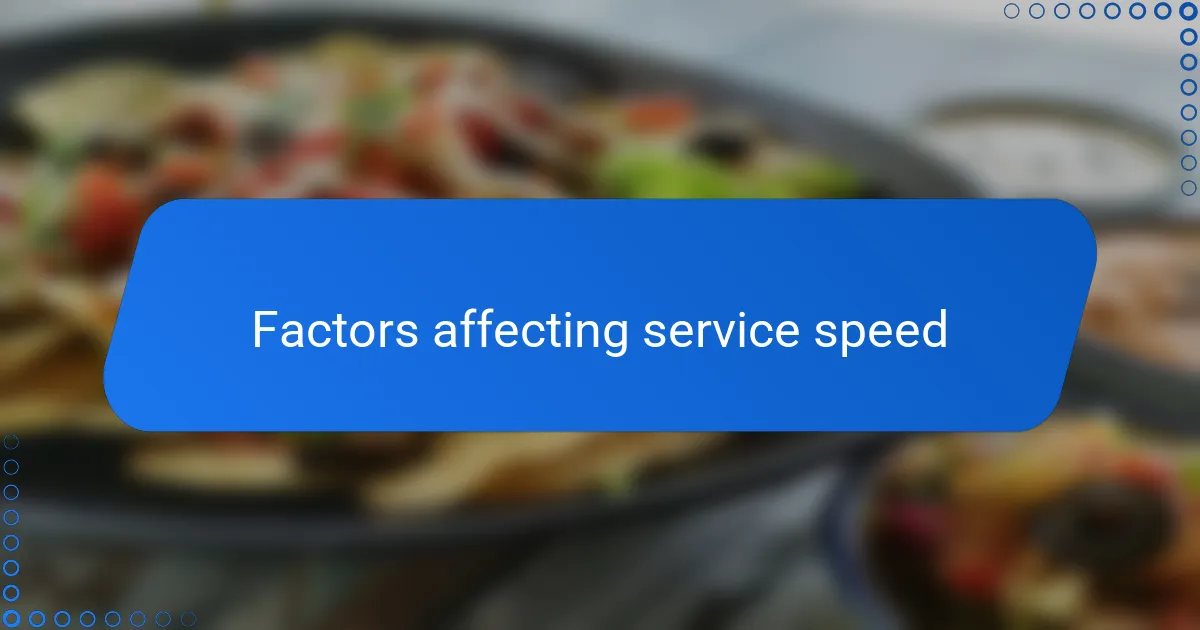
Factors affecting service speed
When it comes to service speed at McDonald’s, several factors come into play. The layout of the restaurant is crucial; a well-organized kitchen ensures orders are processed quickly. I’ve noticed that in some locations, the kitchen staff works like a well-oiled machine, seamlessly coordinating their tasks, while in others, it feels chaotic. This directly impacts how fast food arrives at the counter.
Another important factor is staffing levels during peak hours. I recall waiting longer than I’d like during lunch rushes when there simply weren’t enough employees. This experience not only tests my patience but also affects my perception of the brand. It’s frustrating when you’re in a hurry, and even more so when you see that employees are hustling but still lagging due to the lack of support.
- Employee training and experience
- Restaurant layout and efficiency
- Volume of customers at peak times
- Equipment efficiency and maintenance
- Coordination between front and back of house staff
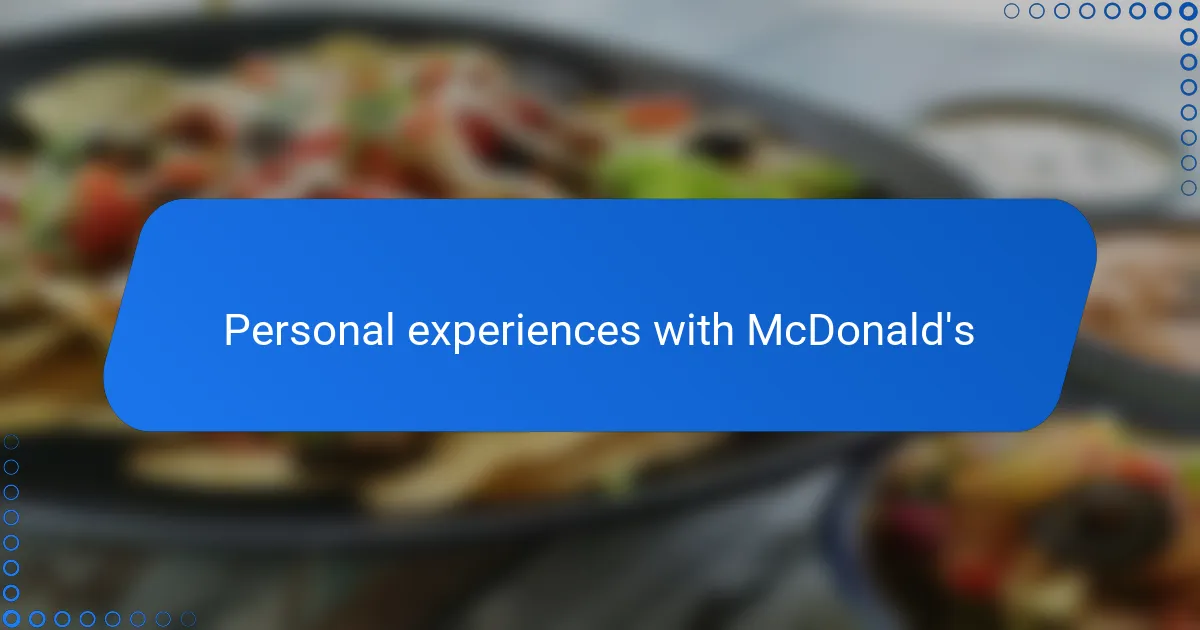
Personal experiences with McDonald’s
My experiences at McDonald’s have often left me impressed by how quickly they serve food, but there have been exceptions. I vividly recall a time when I ordered a breakfast sandwich during a Saturday morning rush, only to wait longer than expected. As I checked my watch anxiously, I couldn’t help but question why certain locations thrive under pressure while others seem to falter.
On the flip side, I’ve had moments at McDonald’s that felt like I was part of a well-choreographed routine. Picture this: I walk up to the counter, place my order, and within minutes, my bag of hot fries is in my hand. It’s this kind of speedy service that makes me believe in the magic of fast food. Have you ever had that feeling when your craving is satisfied exactly when you need it? It’s hard to beat that rush.
Occasionally, I find myself marveling at how the crew manages to keep the line moving. I once visited a McDonald’s late at night, and to my surprise, the service was like clockwork. I felt like royalty as they whipped up my meal in no time, which is a stark contrast to my earlier morning visit—making me think about how time of day really affects the flow of service. It makes you wonder, doesn’t it?
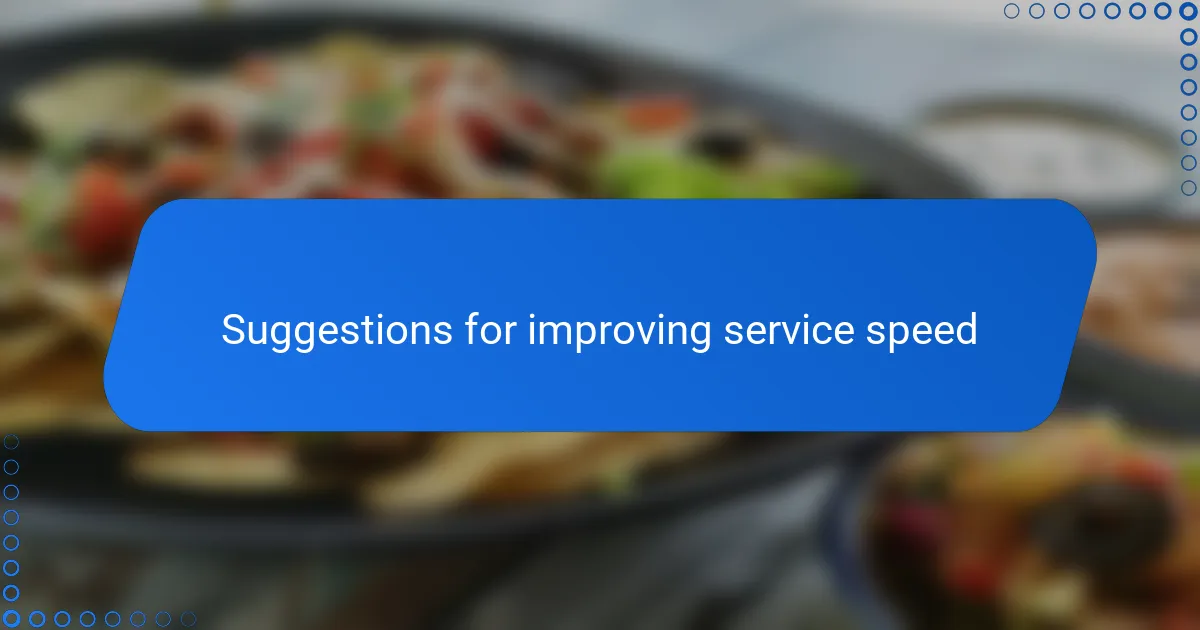
Suggestions for improving service speed
When it comes to improving service speed at McDonald’s, a few practical changes could make a significant difference. First, streamlining the menu during peak hours can help reduce decision fatigue and speed up order processing. I’ve found that when there are fewer choices, I can decide more quickly, and this seems to be true for many others as well.
Another suggestion is to enhance employee training focused on efficiency and teamwork. I recall a visit where the team worked like a well-oiled machine, and it made my experience so much smoother. When staff communicate effectively, it not only keeps the line moving but also creates a positive atmosphere for both the customers and the employees.
Lastly, incorporating technology, like mobile ordering and advanced kitchen display systems, can drastically reduce wait times. I often use the McDonald’s app to order ahead, and it’s a game changer. It allows me to skip the line entirely and enjoy my meal without the wait.
| Suggestion | Benefit |
|---|---|
| Streamline Menu | Faster Decision Making |
| Enhance Employee Training | Improved Efficiency and Teamwork |
| Incorporate Technology | Reduced Wait Times |
